Pickleball’s skyrocketing popularity isn’t just a testament to its fun, social nature, but also to its accessibility. However, as casual games turn competitive, understanding equipment regulations becomes crucial. Whether you’re a beginner or gearing up for tournaments, knowing what’s in and what’s out can make all the difference.
Navigating the world of pickleball equipment regulations might seem daunting at first. But don’t worry, it’s not as complex as it sounds. From paddles to balls, and even the shoes you wear, there are specific guidelines that ensure fair play and maintain the sport’s integrity. Let’s dive into what makes equipment compliant and how to check if yours makes the cut.
Importance of Pickleball Equipment Regulations
As pickleball continues to transition from a casual backyard pastime to a more structured competitive sport, the emphasis on equipment regulations has grown exponentially. This shift ensures that fairness and consistency are maintained in every match, providing every player with an equal footing. These regulations cover a wide range of equipment, from paddles and balls to the very shoes players wear on the court.
Fair Play and Competition Integrity are at the core of why these regulations matter. By standardizing the types of paddles and balls that can be used in official matches, organizers and players can avoid disputes that might arise from one party gaining an undue advantage through specialized or modified equipment. It’s not just about maintaining a level playing field; it’s also about upholding the spirit of competition that pickleball embodies.
Safety is another critical aspect underpinned by these regulations. Equipment that fails to meet the specified standards could pose risks not only to the player using it but also to their opponents and even spectators. The material and build quality of paddles, for instance, are regulated to prevent equipment breakage that could lead to injuries. Similarly, the specifications for balls ensure they behave predictably during play, reducing the risk of accidental harm.
Moreover, equipment regulations play a vital role in Player Development. By standardizing the equipment used in competitions, players can focus on honing their skills rather than trying to adapt to an ever-changing array of non-standard equipment. This consistency allows players to develop a deeper understanding of the game, including strategies and techniques, without being unduly influenced by equipment variables.
For those interested in seeing how these regulations impact professional play, here’s a brief overview of essential guidelines:
| Equipment | Regulation Summary |
|---|---|
| Paddles | Must not contain reflective materials and must meet size and rigidity standards. |
| Balls | Must meet specific bounce, size, and weight requirements. |
| Shoes | Non-marking soles are required to protect court surfaces. |
These rules ensure every player knows what to expect when they step onto the court, whether it’s a local tournament or a national competition. Keeping abreast of these regulations and ensuring compliance is essential, not just for competitive integrity but also for the personal growth of each player within the sport.
Understanding Paddle Regulations
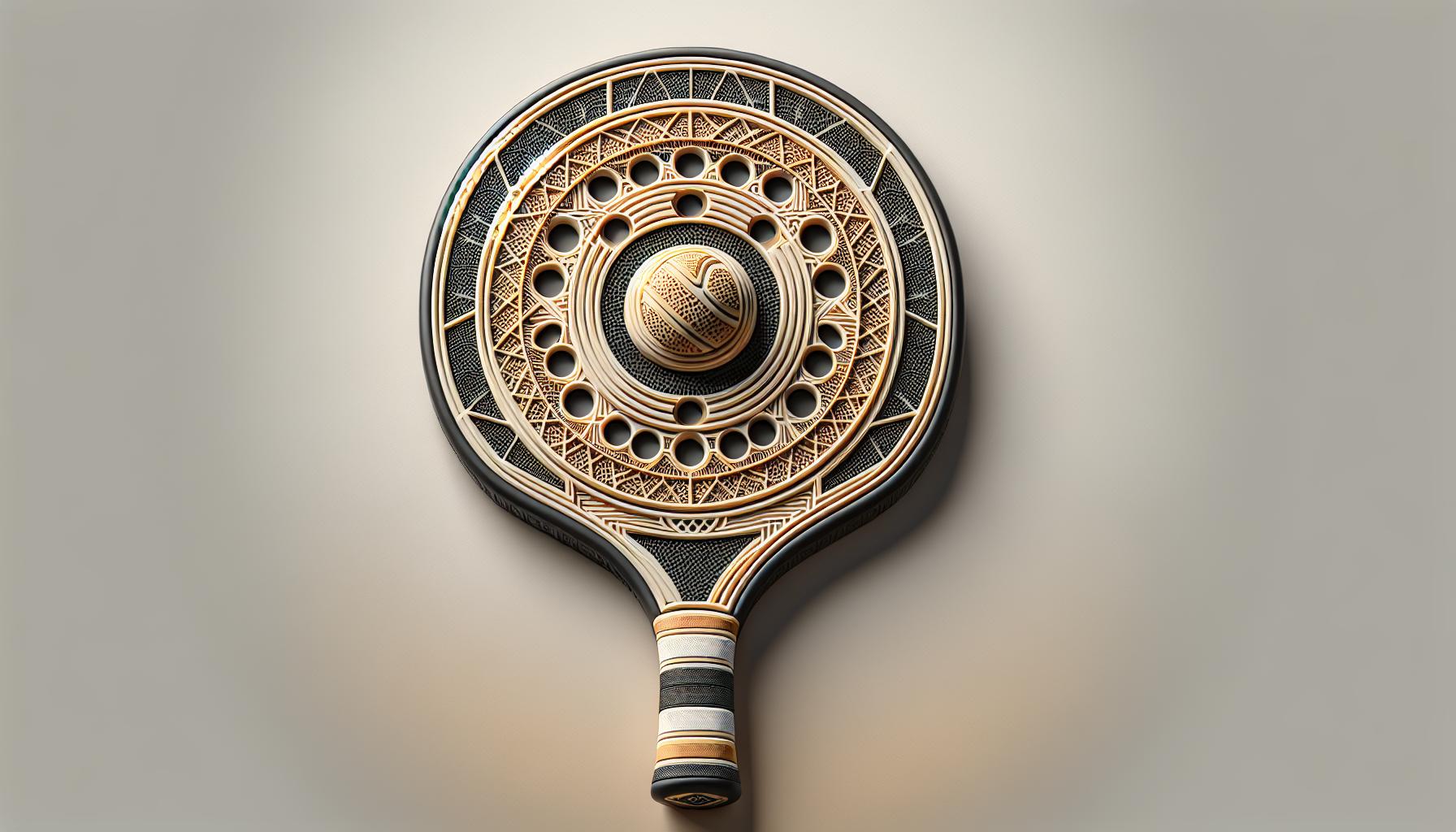
Pickleball’s surging popularity has led to a closer examination of equipment standards to ensure a level playing field. At the heart of this scrutiny are the paddle regulations, which are vital for maintaining the sport’s integrity and competitive balance.
Paddle regulations specify dimensions, materials, and surface texture. Paddles must not exceed a combined length and width of 24 inches, with a maximum length of 17 inches. This size restriction ensures that players cannot gain an unfair advantage through unusually large equipment. The materials used in paddle construction are also regulated. They must not contain substances that could impart undue spin or speed to the ball beyond what is achievable through player skill alone.
The surface texture of paddles is another crucial aspect of regulation. The rules specify that the surface must not be reflective or feature any texture that can alter the ball’s flight path significantly. This stipulation is in place to avoid scenarios where equipment rather than skill dictates the outcome of points.
Why Compliance Matters
Compliance with paddle regulations isn’t just about following rules; it’s about preserving the essence of pickleball as a sport where skill, strategy, and athleticism are paramount. Manufacturers and players alike are responsible for ensuring that paddles meet these standards. Tournament organizers often conduct random equipment inspections to uphold these regulations.
Players found using non-compliant paddles may face disqualification and other penalties. Such stringent measures emphasize the importance of adhering to equipment standards not only for individual games but also for the overarching reputation and fairness of the sport.
Evolution of Paddle Technology
As pickleball continues to grow, so does the innovation surrounding paddle technology. Manufacturers are constantly seeking ways to push the boundaries within the established rules, looking for materials and designs that can enhance performance without breaking regulations. This innovation cycle benefits players, offering them an array of choices to match their playing style while maintaining a fair competitive environment.
Material advancements have led to lighter, more durable paddles with improved sweet spots. These developments allow for greater precision and power, enabling players to execute a wider variety of shots. However, with innovation comes the challenge of ensuring that new designs remain within regulatory limits, a responsibility that falls on both manufacturers and governing bodies overseeing the sport.
Guidelines for Ball Compliance
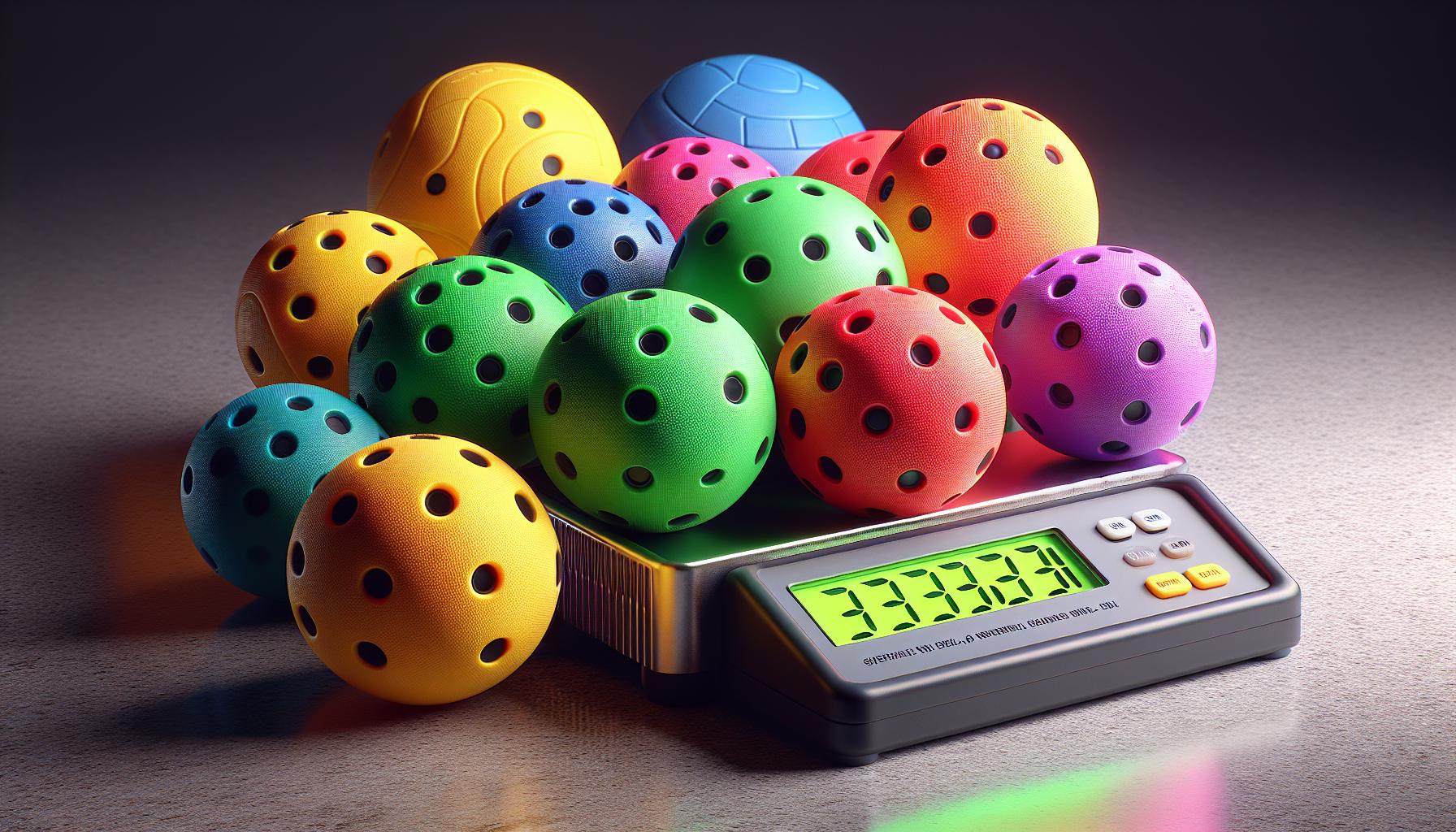
When it comes to pickleball, not only do the paddles face strict regulations, but the balls used in official competition are also subject to rigorous standards. These guidelines ensure that every match is played on equal terms, emphasizing skill over equipment advantages.
The approved balls for tournament play must meet certain criteria regarding size, weight, and bounce. The specifications are designed to standardize play across all levels and locations, making the choice of ball a critical element in maintaining the integrity of the game.
Key Specifications
- Size: The diameter of a regulation pickleball must be between 2.87 and 2.97 inches.
- Weight: An acceptable ball weighs between 0.78 and 0.935 ounces.
- Bounce: When dropped from a height of 78 inches onto a granite surface, the ball must bounce between 30 and 34 inches.
These guidelines ensure that the balls provide a consistent playing experience, crucial for a game that relies heavily on precision and reflexes.
Material and Design
The material of the ball also plays a significant role in its performance. Most competition-grade pickleball balls are made from a durable plastic designed to withstand the rigors of play. They typically feature 26 to 40 round holes, which aid in flight stability and speed. The color of the ball, usually bright for visibility, is standard in competitions.
Compliance and Testing
To ensure compliance, balls are subjected to rigorous testing by governing bodies before being approved for competitive use. Manufacturers submit samples for evaluation, where they undergo tests to verify their size, weight, bounce, and material properties.
Organizations such as the USA Pickleball Association (USAPA) maintain a list of approved balls that meet their standards for official tournaments. Players are encouraged to check this list before purchasing balls for competitive play to ensure they’re practicing with equipment that mimics the conditions of tournament play.
Ongoing Adjustments and Future Considerations
As the sport of pickleball evolves, so too do the regulations surrounding equipment. The standards for ball compliance are periodically reviewed and adjusted in response to developments in materials science and player feedback. This dynamic approach ensures that pickleball remains fair, competitive, and enjoyable for players at all levels.
Footwear Requirements for Pickleball
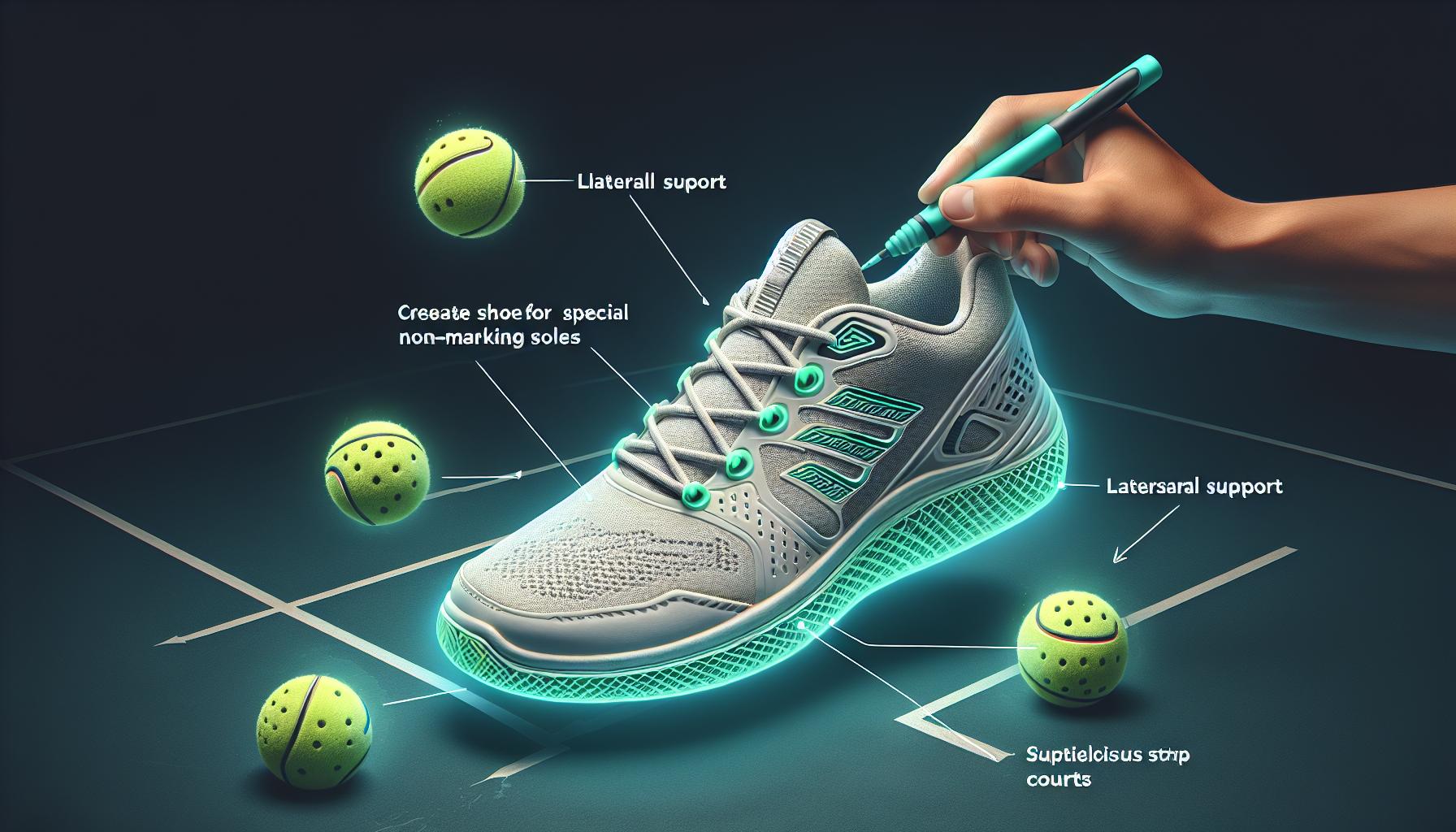
When it comes to pickleball, the type of shoes players wear is more than just a matter of personal style or comfort. It’s about performance, safety, and adhering to regulations that ensure fair play. Unlike some sports with highly specific footwear requirements, pickleball’s guidelines for shoes are somewhat more relaxed but still crucial for anyone stepping onto the court.
For starters, the primary rule is that all players must wear proper athletic shoes that are designed to provide support, stability, and protection during play. This ensures that players can move quickly and safely, reducing the risk of injury. The right shoes can also enhance a player’s agility, enabling them to make those quick lateral moves that are so essential in pickleball.
While there aren’t brand-specific requirements, there are certain characteristics that make some shoes better suited for pickleball than others. Shoes with non-marking soles are a must, as they prevent scuff marks on court surfaces. This is not only a matter of maintaining appearances; it’s also about preserving the playing field for everyone. Additionally, the soles should have enough grip to prevent slipping but not so much that they catch on the surface and hinder movement.
Many players opt for shoes designed specifically for tennis or similar racket sports, as they offer the lateral support and sole design conducive to the quick moves required in pickleball. However, players should choose footwear that feels comfortable for their style of play and foot shape. Indoor and outdoor pickleball courts have different surface types, and players might find that they need different shoes for each setting. Outdoor courts typically call for shoes with more durable soles to withstand the rougher playing surface, whereas indoor courts, often made of hardwood or a similar material, require shoes with good grip to prevent slipping.
It’s worth noting that as pickleball continues to grow in popularity, some manufacturers are beginning to offer shoes targeted specifically at pickleball players. These models aim to combine the best features of tennis, badminton, and table tennis footwear, offering a balance of grip, support, and flexibility tailored to the unique demands of pickleball.
Ensuring Compliance: Tips for Players
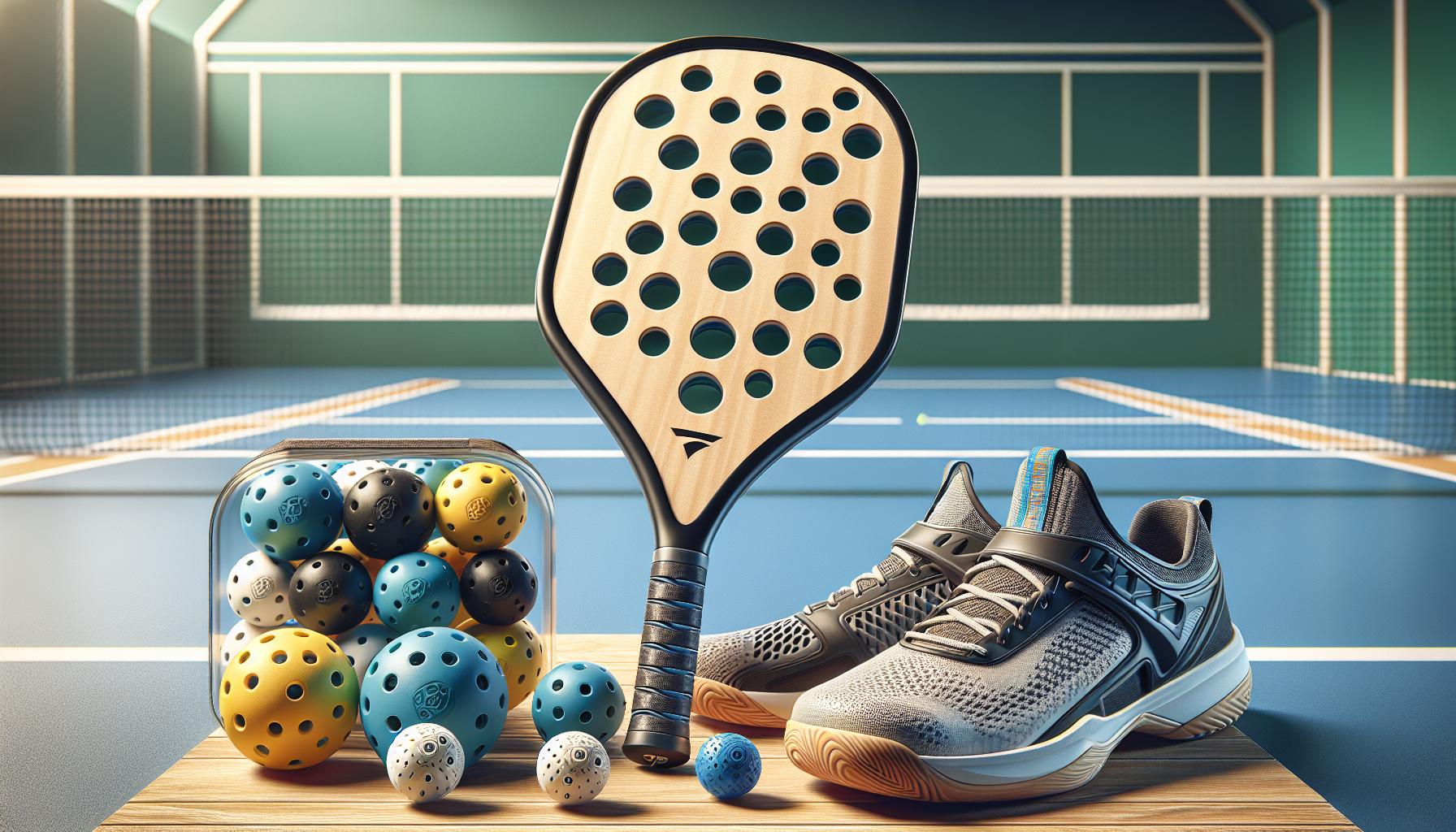
Pickleball, a sport that combines elements of tennis, badminton, and ping-pong, has surged in popularity. With this growth comes the need for standardized equipment regulations to ensure fair play. For players, staying informed about these guidelines is crucial for both casual games and official matches.
The first step in ensuring compliance is staying updated with the rules set forth by the USA Pickleball Association (USAPA). The USAPA periodically reviews and updates equipment standards to reflect advancements in technology and changes in gameplay. Players should regularly check the USAPA website for the latest rulebook, which includes specifications for balls, paddles, and other gear.
Paddle Selection
Choosing the right paddle is vital for compliance and performance. The USAPA provides a list of approved paddles that meet specific materials, size, and texture requirements. When selecting a paddle, players should:
- Verify that it’s on the USAPA’s approved equipment list.
- Check for a smooth surface without any modifications that increase the roughness beyond acceptable levels.
Ball Compliance
Just as important as the paddle, the ball must also meet certain standards. These include:
- Size
- Weight
- Bounce
- Hardness
- Design
The USAPA approves balls for indoor and outdoor play, with each type designed to perform best in its respective environment. Players often find that outdoor balls are harder and less responsive to spin, while indoor balls are softer and more suitable for controlled play.
Footwear and Apparel
Although there’s more flexibility in clothing choices, shoes must offer good support and have non-marking, grippy soles. As manufacturers develop sport-specific shoes, picking footwear that’s both comfortable and compliant becomes easier. Appropriate attire that does not distract or disadvantage the opponent is also encouraged, fostering a respect for the game’s integrity and fellow players.
Regular Equipment Checks
Regularly inspecting equipment for wear and tear is essential. Paddles can develop cracks or other modifications that might render them non-compliant. Balls, too, can wear down, affecting their bounce and hardness. Replacing equipment as needed not only ensures compliance but also aids in maintaining optimal performance.
Conclusion
Staying up to date with the USAPA’s equipment regulations ensures that players not only adhere to the standards but also optimize their game. Whether it’s selecting the right paddle or choosing the best footwear, understanding these guidelines is key. Regular checks on equipment will not only keep players compliant but also in top form. As pickleball continues to capture hearts, being informed and prepared will make all the difference on the court.

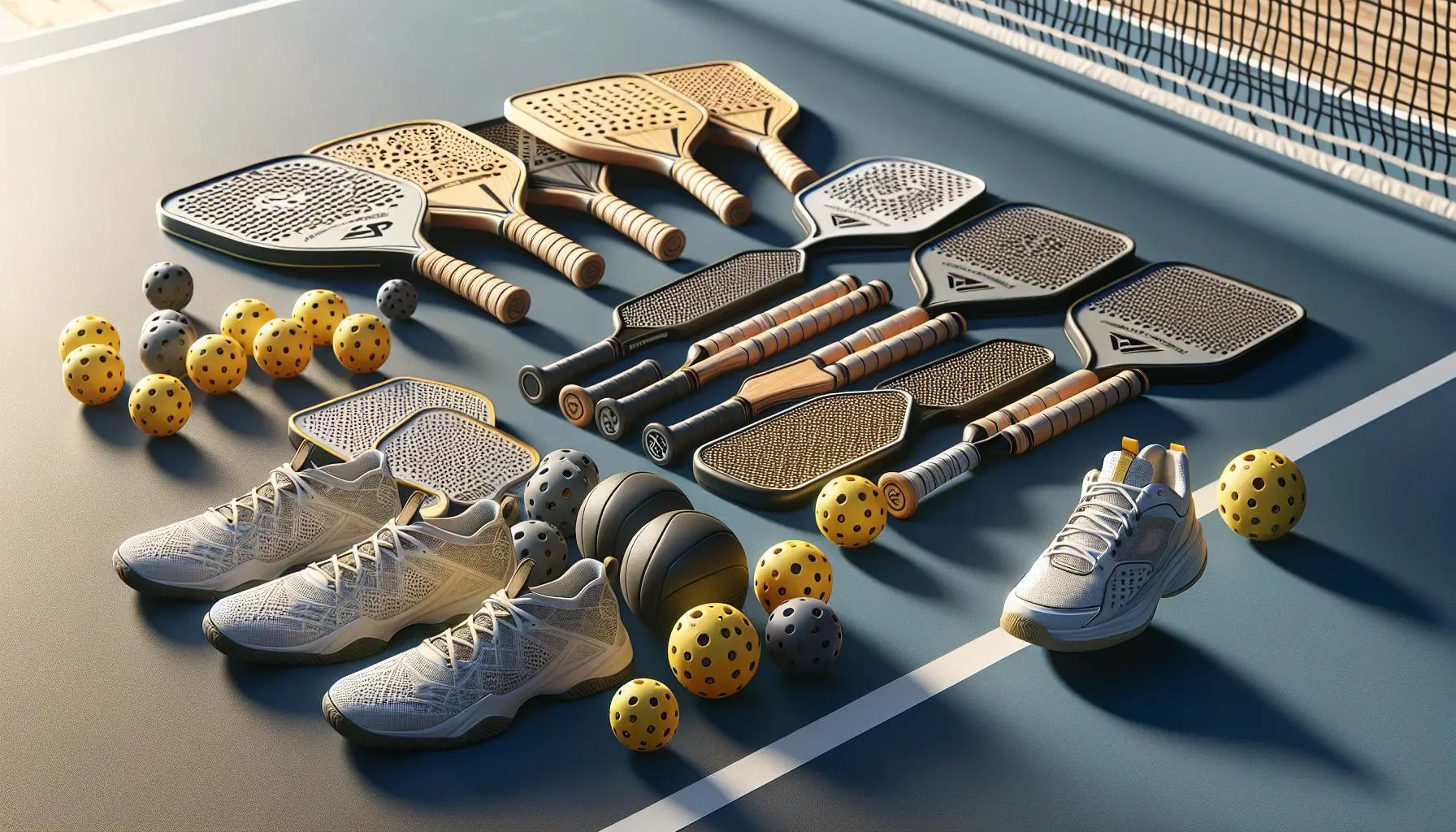












0 Comments